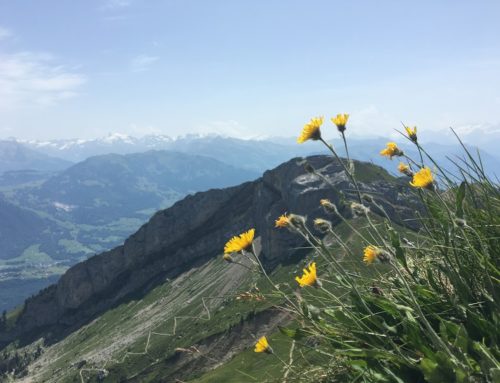Did you ever wonder what the difference is between Yin Yoga and Restorative Yoga? Both are held for longer periods of time, both may use props, both open up space in the body. Read on about the Yin practice, their benefits and some Yin poses that you can try at home.
Journal
Take stock of where you are now within the scope of your Sankalpa (intention), your restorative practice, the way that your physical being feels, the breath and your mind. Tune into your whole being as you journal.
The Poses
Sublime Side Lean
Props: bolster or 2 or 3 pillows or blankets
Benefits: Stretches the torso and provides a gentle twist which allows a release in tension in the lower back area.
Place bolster or the 2 or 3 blankets or pillows horizontally on your mat or floor. Lie on right side with hip at the base of the blankets or pillows. Torso should rest on the stack. Right arm rest on the floor with the palm up. The left arm can reach over the head to increase the stretch. Close your eyes and allow your body to relax and release any stress or tension. Slowly sit up and switch sides for the same amount of time.
Focus on your breath. Breath into your right side allowing that gentle stretch to travel from the tip of your fingers down your lower spine. Sense the left side of your body gently melting and surrendering to the ground beneath you. All tension and stress being recycled by mother earth. Sense the gentle letting go of your muscles and knowing that you are safe and supported. Breath deep and exhale soft and long.
Modified Legs up the Wall
Props: bolster, 2 blocks, 1-2 blankets, strap, eye pillow, neck roll
Benefits: increases circulation and helps venous and lymphatic flow from the lower body; relieves swelling and fatigue in the legs; helps relieve muscular skeletal stress in pelvis; quiets the mind and can help promote ease in meditation and sleep. Great variation if your hamstrings are tight or legs are aching.
Begin with using a double-folded blanket to be placed right above sacrum or under hips (see photo), setting it approx. distance 6-8″ from bolster (adjust in pose). Sit down on the blanket and place your legs on the bolster. Arms rest by your side, palms face up or with Goddess arms.
Variations: To ground legs, blanket or sandbag placed on belly or legs. Strap can be placed around calves, so you lose the feeling of holding up legs.
Savasana as Reclined Goddess
 |
| Version with arms by side |
Props: 2-4 blankets folded in quarters, neck roll. Additional rolls for arm supports.
Benefits: circulation to the hips, shoulders, chest. Opens up the chest to aid in congestion. Shoulder strengthener. Subtle release in lower back.
Place folded blankets on mat, stacking 1 or 2 on top of each other. Head should rest on blanket. Lay down on entire stack of blankets and cross legs. Arms come out to sides and bend at 90 degree angle, palms up (Goddess arms). Add more rolls under wrists, forearms to support tight shoulders. Always an option to lay arms by your side. After 5 minutes, change crossing of legs.
Yin Yoga (Source: About.com Yoga by Ann Pizer)
In Yin Yoga, poses are held for several minutes at a time in order to the stretch the connective tissue around the joints. The most prominent advocate of this method is the American teacher Paul Grilley, who learned the basic technique from Taoist Yoga teacher and martial arts expert Paulie Zink. Grilley also studied with the Japanese Dr. Motoyama, whose research posits that our connective tissue may actually be the key to discovering subtle energy channels in the body (called nadis in yoga and meridians in Traditional Chinese Medicine).
Despite having an advanced asana practice, which is supposed to help prepare the body for meditation, Grilley found himself uncomfortable when he began to attempt long, seated meditations. Yin Yoga directly addresses the demands that sitting still in one position for a long time places on the body by focusing on stretching connective tissue instead of muscle. Sarah Powers, who studied with Paul Grilley, is another well-known teacher in this field.
Yin and Yang
In Chinese philosophy, the yin yang symbolizes the duality and interdependency of the natural world. Things that are yang are moving, changing, and vigorous. In contrast, things that are yin are still, static, and calm.
The majority of western yoga practices have evolved into being very yang- lots of movement, with an emphasis on stretching the muscles. Muscles are yang, while connective tissues like tendons and ligaments are yin. Sitting for meditation is more yin, and therefore requires a practice that adresses this use of the body. While joints like the knees and ankles are fragile and easily over stretched, the body also contains joints in the pelvis, hips and lower spine that are naturally much less flexible. It is these joints that yin yoga primarily addresses.
Yin Poses
Yin poses are derived from traditional yoga poses, though they have been renamed to distinguish them. Thus, cobbler’s pose becomes butterfly, plow pose becomes snail, and pigeon pose becomes sleeping swan.
Yin vs Restorative
Though Yin yoga and restorative yoga are similar in that poses are held for long periods, they have fundamentally different purposes. It is possible to get yin benefits from doing restorative poses, but the goal is not relaxation. Restorative poses are typically much more supported using props. In yin poses, gravity helps intensify the stretch. Some poses, such as dragon (a version of lizard pose), would not work as restorative poses, which are typically done in a supine or prone position.
Try these at home. 1-2 minutes to begin with, practicing up to 3-5 minutes.
Bananasana Pose
Half Butterfly
Caterpillar


Leave A Comment